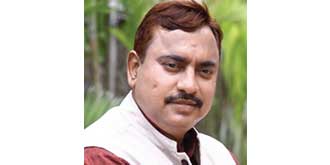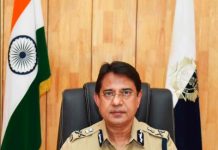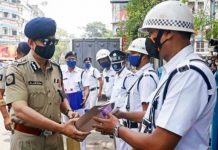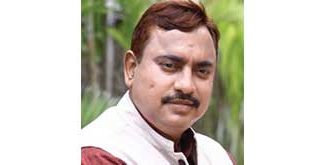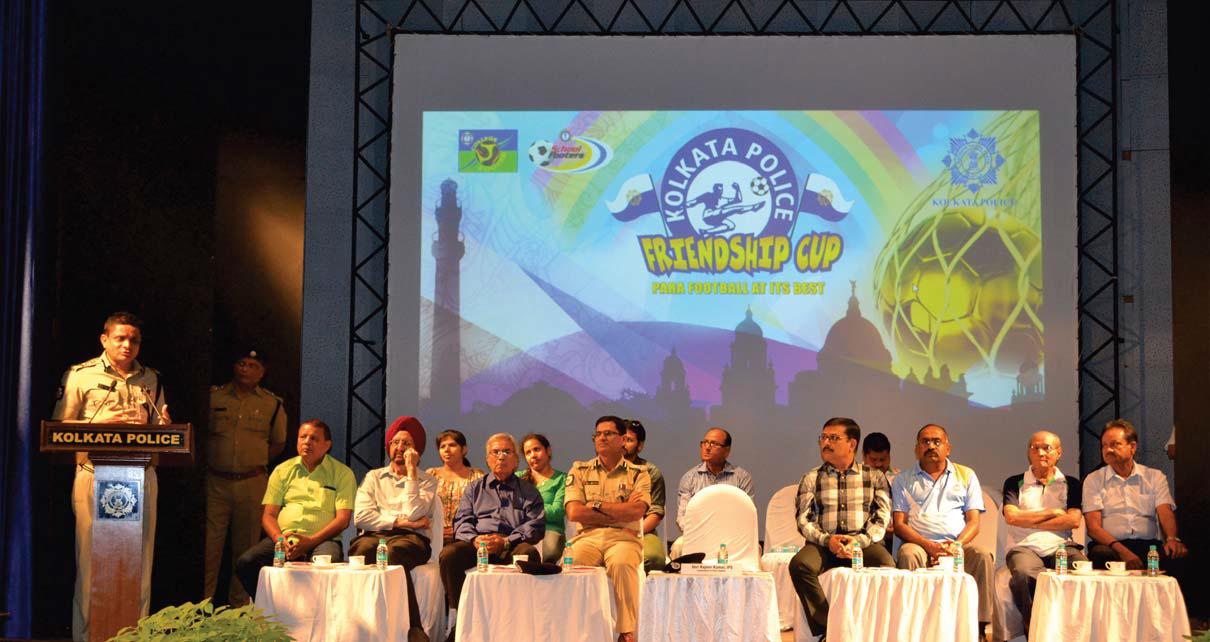
Kolkata is thriving with economic boom. Nevertheless, its society is riddled with many problems, and it is still carrying the burden of colonial legacy. Thus to sweep away traditional mistrust and prejudice, it was v e r y o b v i o u s t o s e l e c t a universal language as a medium t o c o m m u n i c a t e w i t h c i t y people, and what else it could be other than football. Therefore, the concept of Friendship Cup Football Tournament has been conceived by Kolkata Police. In India, football is played and followed with a lot of passion, zeal and enthusiasm. Kolkata Police wanted to put forward something new for a larger section of underprivileged youth and Friendship Cup made it possible to reach out to them.
Amid many community policing schemes of Kolkata Police, Friendship Cup Football Tournament which is popularly known as Para Football has been one of the most successful and talked about initiatives in b u i l d i n g c o m m u n i t y relationships. Since there has been a fan esta about soccer in many European and Latin American countries and thus initiative of Kolkata Police can be a replicable model for any other countries in the world to adapt.
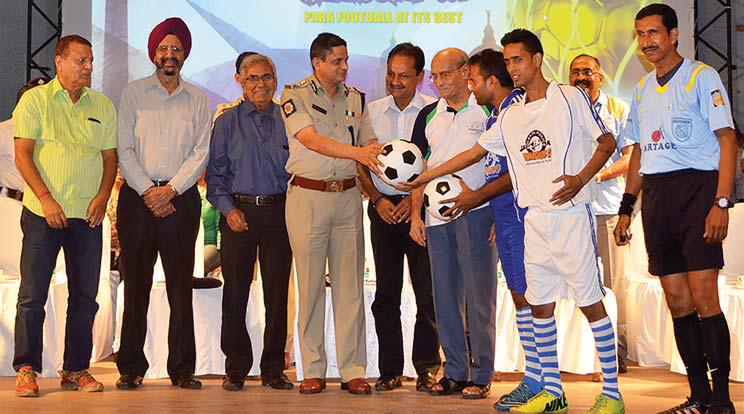 In fact, its tagline goes as ‘Para F o o t b a l l a t i t s b e s t ’ . I n appreciation of its immense popularity, corporate sectors have associated themselves with this tournament, thereby dovetailing with Corporate Social Responsibilities (CSR). As a furtherance of this, School- Footers, an Inter School Football T o u r n a m e n t a n d C o l l e g e F o o t e r s , a n I n t e r C o l l e g e Tournament comprising have been added to the sporting calendar of Kolkata Police and serve as a major means towards improvement of the police- community relationship. This project was started in 1997 with the participation of very few numbers of teams. Participation of local clubs in this tournament has increased in incredible numbers from the time of its inception and it has attained i m m e n s e p o p u l a r i t y . T h i s tournament had been referred in Limca Book of Records in 2007 as there had been participation of 518 teams and 7770 players in such a single tournament. Such a constructive initiative was whole-heartedly welcomed by everybody especially younger generation, the future of the n a t i o n . I t i s o u r m o t t o t o channelise their energies and vigour for the larger good of the society.
In fact, its tagline goes as ‘Para F o o t b a l l a t i t s b e s t ’ . I n appreciation of its immense popularity, corporate sectors have associated themselves with this tournament, thereby dovetailing with Corporate Social Responsibilities (CSR). As a furtherance of this, School- Footers, an Inter School Football T o u r n a m e n t a n d C o l l e g e F o o t e r s , a n I n t e r C o l l e g e Tournament comprising have been added to the sporting calendar of Kolkata Police and serve as a major means towards improvement of the police- community relationship. This project was started in 1997 with the participation of very few numbers of teams. Participation of local clubs in this tournament has increased in incredible numbers from the time of its inception and it has attained i m m e n s e p o p u l a r i t y . T h i s tournament had been referred in Limca Book of Records in 2007 as there had been participation of 518 teams and 7770 players in such a single tournament. Such a constructive initiative was whole-heartedly welcomed by everybody especially younger generation, the future of the n a t i o n . I t i s o u r m o t t o t o channelise their energies and vigour for the larger good of the society.
The winners of this tournament over the years have received prizes galore ranging from trips t o E n g l a n d , G e r m a n y & Singapore to motorcycles as i n d i v i d u a l p r i z e s . C h o s e n players are given free vocational t r a i n i n g s o t h a t t h e y c a n establish themselves in their life. Best players of the tournament were taken for a trip to Germany and had the opportunity to train with FC Bayern Munich in Germany.
 Every year new summits are scaled. In 2015, 755 local teams, 52 Schools and 24 Colleges participated in the tournament which involved 15100 local youth between 16 to 25 years a n d 1 5 2 0 s t u d e n t s . T h i s t o u r n a m e n t i s t h e l a r g e s t tournament organized in the world, so far participation is c o n c e r n e d . P o l i c e Commissioner Rajeev Kumar inaugurated Friendship Cup Tournament this year in which 826 clubs participated in 69 police stations’ areas. It was organised at 35 venues across the city. The Usha Fans Factory playground encountered 55 clubs under ten different police stations of South Suburban Division. This tournament drew a huge crowd of players and s p e c t a t o r s a l i k e . T h e tournament was conducted in the knockout format, and took around two months to end. In 2016, School Footers & College Footers football matches were not organised due to short time frame and overlapping of examination Schedules.
Every year new summits are scaled. In 2015, 755 local teams, 52 Schools and 24 Colleges participated in the tournament which involved 15100 local youth between 16 to 25 years a n d 1 5 2 0 s t u d e n t s . T h i s t o u r n a m e n t i s t h e l a r g e s t tournament organized in the world, so far participation is c o n c e r n e d . P o l i c e Commissioner Rajeev Kumar inaugurated Friendship Cup Tournament this year in which 826 clubs participated in 69 police stations’ areas. It was organised at 35 venues across the city. The Usha Fans Factory playground encountered 55 clubs under ten different police stations of South Suburban Division. This tournament drew a huge crowd of players and s p e c t a t o r s a l i k e . T h e tournament was conducted in the knockout format, and took around two months to end. In 2016, School Footers & College Footers football matches were not organised due to short time frame and overlapping of examination Schedules.
The beneciaries of Friendship Cup Football help to strengthen hands of the police by providing information about local anti- socials, unwarranted persons and similar activities. Inputs from them help the cops to prepare more people friendly policies as they serve as an important feedback mechanism. Their voluntary assistance is worthy for helping critical patients during emergencies, during crisis management such as re, water logging and similar situations. This unique model which involves common people to work hand in hand with police has the potential of evolving as a replicable model i n c o m m u n i t y p o l i c i n g anywhere in the world.

